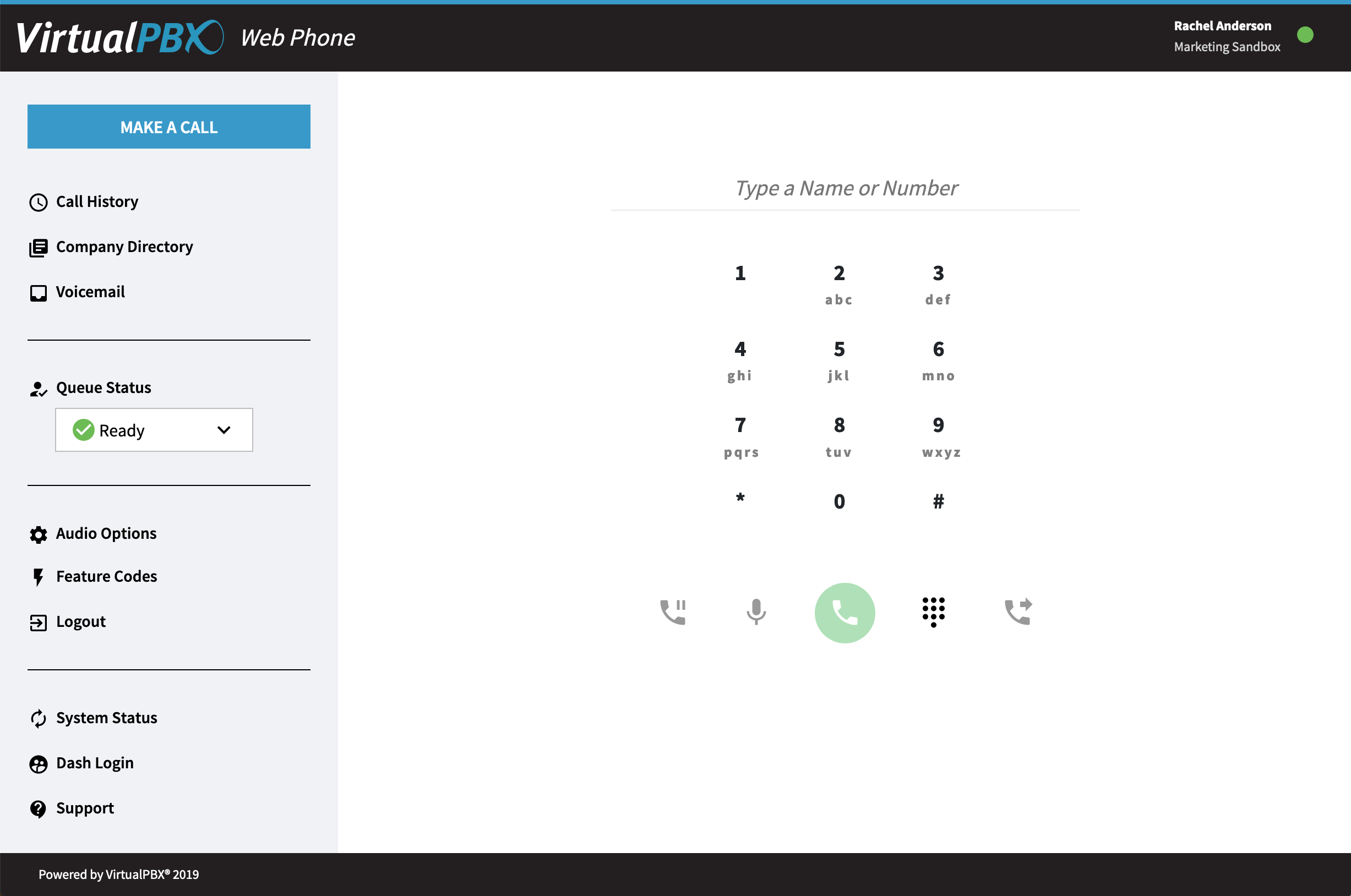 We’re now six months into the global spread of COVID-19. It has caused dramatic loss of life and an altering of the economy most people have never seen before.
We’re now six months into the global spread of COVID-19. It has caused dramatic loss of life and an altering of the economy most people have never seen before.
In order to keep employees safe, many businesses have adjusted their work practices to include telecommuting. We put out a call to all interested businesses to share their working from home tips for success. Now, after sorting the overwhelming response we received, we’d like to share their experiences with you.
We hope you can find some wisdom here from the wide range of businesses we had the pleasure of getting to know.
Generalized Advice and Experiences
Several of our respondents talked about their company’s experiences and the manner in which they have used various online tools to go remote. Their shared stories highlight what a lot of us are seeing in our own workplace situations, and they mark the need for both cooperation and community in the workplace.
Chat Software in a Sea of Challenges
Robert Moses, founder of The Corporate Con/noisseur spelled out what it seems that a majority of businesses are facing. Moses said The Corporate Con/noisseur has offices in Atlanta, Raleigh, and New York City and that all employees in all offices transitioned to home work beginning in March.
“This shift was, initially, difficult on all of us and required both patience and understanding from the top down,” Moses said.
“Initially, before the pandemic, many of our internal communications occurred via face-to-face meetings between centralized teams,” Moses continued, noting that the Slack communications platform helped pull all the remote workers together so they could be productive. The company has used Slack extensively, and within its talks to “dramatically reduce meetings and the number of emails sent,” other project management software has been considered.
Moses called The Corporate Con/noisseur stronger and more resilient as a result of dealing with this restructuring of everyday work.
Repurposing Online Chat Software
Steve Johnson, a developer at Too Much Tina Marketing also noted that Slack has become an important tool in keeping the team connected. What’s unique here is that the chat service has been extended into a conduit for data archiving.
“Each of us have created a personalized Slack forwarding e-mail address and set it up as a new contact in our phones,” Johnson said. “This allows each of us to forward e-mails, texts, URLs, screenshots, and other pieces of content into Slack where it can be shared, discussed, tasked, and archived for future reference.”
Johnson also noted that the Too Much Tina Marketing team has invited clients to participate within Slack. Their clients have found it useful for communications about business matters. Moreover, Johnson said, the Too Much Tina employees have tried to make Slack a fun and inviting place, which has urged clients to try Slack that were initially hesitant to adopt another piece of software.
Relying on Voice and Video
In some cases, businesses have actually stepped away from text-based chat platforms in order to keep their operations running smoothly. The work from home tips for success from Dan Edmonson, founder and CEO of Dronegenuity, included call-outs for phone calls and video-based chat because, in Edmonson’s words, “allowed us to experience the benefits of in-person interaction.”
 Edmonson noted that Dronegenuity had previous experience with remote work, so the transition to remote work for the entire staff wasn’t overwhelming. However, team members were accustomed to weekly meetings in a co-working center so everyone could stay on track. Because of this, Edmonson continued, “a remote working environment has required our team to focus on communication methods that closely resemble the feeling of in-person communication.”
Edmonson noted that Dronegenuity had previous experience with remote work, so the transition to remote work for the entire staff wasn’t overwhelming. However, team members were accustomed to weekly meetings in a co-working center so everyone could stay on track. Because of this, Edmonson continued, “a remote working environment has required our team to focus on communication methods that closely resemble the feeling of in-person communication.”
Making Real Life Virtual
This type of experience that mimics in-person meetings also takes place for Leo Young, a realtor for Coldwell Banker who said that interactions with prospective homeowners have gone virtual.
“Where possible,” Young said, “we conduct business remotely, such as with virtual showings instead of in-person showings, virtual home inspections instead of in-person home inspections, and digital closings instead of in-person closings.”
Young commented that all the realtors in his area have been “very understanding to accommodate and reduce physical interaction.”
Prioritizing Company Culture
Sean Nguyen, a director at Internet Advisor, told VirtualPBX that a special video chat session was created to keep morale high among the changing work culture.
“I feel like it’s my job to ensure that I keep the team spirit alive,” Nguyen said, “so I’ve set up a daily ‘social’ video call, in addition to whatever ones we have for work purposes. It’s helped us tremendously. It’s a time that we set aside for us to just chat, see each other, catch up, talk about our families, etc.”
Nguyen noted that this daily video call has helped keep the company culture alive. It’s allowed the Internet Advisor team to stay connected in a way that’s not specifically tied to work tasks, hopefully “coming out the other side an even stronger team than we were before.”
Tips, Tricks, and Statistics
Other respondents were more forthcoming about their working from home tips for success and the statistics associated with their transition to remote work.
Maintaining Mental Health
Sunny Ashley, founder and CEO of Autoshopinvoice, spoke about the reality of maintaining a balanced life when working from home.
“Working from home blurs the line between your professional and personal life,” Ashley said. “It doesn’t allow your mind to have a clean break between working hours and after-work hours.”
To combat the blending of home and work, Ashley recommended creating a sustainable schedule and creating physical boundaries between those places. This can manifest in the creation of a schedule that works for you, including finding a “productivity sweet spot” when you know you’re best at tackling important tasks. Checking email, responding to messages, and other less cognition-intensive tasks can be saved for a time outside that zone.
Physical zoning can be created by setting aside a space for your work – no matter how simple.
“Dedicate one chair, table, or room in your house purely for working,” Ashley said. “Your mind will begin to build a habit of associating the furniture or space with work. When you get up to do something else, it’ll be easier to adjust back into home life.”
Tyler Brooks of JAM Paper & Envelope recommended bringing the traditional workplace into the home office by way of familiarity.
“Put on some music or a podcast, whatever you normally listen to while at work at the office,” Brooks added. “This is also a really great method of getting into the headspace to complete your daily work tasks as normal.”
Productivity Tracking
For some businesses, it’s important to keep a close eye on the tasks at hand. Tom De Spiegelaere, founder of Tom Spicky says use of Time Doctor software helps track employee productivity.
“Through the software,” Spiegelaere reported, “I’m able to know a few things – how much time an employee spends on each task, whether an employee is visiting any unproductive sites like social media, and whether the employee is really working at the time.”
Importantly, a heavy dose of disclose comes along with this activity tracking.
“I tell my employees that we’re using the software to monitor their productivity,” Spiegelaere concluded. “I believe it’s important to be explicit in the matter.”
Jane Flanagan, the lead project engineer at Tacuna Systems, also advocated for the use of Time Doctor, noting that login and logout times can be recorded and that time stamps can be associated with specific tasks.
More than that, Tacuna employees are expected to meet short-term goals throughout their work weeks.
“Working from home should not mean ‘anything goes,’ so we set up rules and guidelines concerning time, work hours, work to be done, communication, conduct, and others,” Flanagan said about Tacuna’s structure.
A More Hands-Off Approach
Although strict time tracking might work well in some offices, it isn’t the path forward for every company. Michael Lowe, Car Passionate said his employees are allowed to adjust their schedules to fit their own preferences. There’s only one overarching goal: work must be completed on time.
“All staff have the ability to work when they want as long as the work gets done,” Lowe said. “Easy. Right?”
Lowe noted that work-life balance has always been a high priority for Car Passionate. The company’s switch to remote work has brought in new ways to keep the balance intact, such as virtual meetings through Zoom, quiz nights, and online game competitions.
At Car Passionate, video chat helps the team stay connected. Email, Lowe pointed out, is the company’s primary method of communicating about projects and workloads.
Take Advantage of the Small Things
One of the working from home tips for success from SEO manager Jen Penaluna is to find simple ways to access important information. At Bigfoot Digital, Penaluna called out trust and transparency is key elements to a successful remote work atmosphere.
Bigfoot Digital uses the team collaboration platform Team Huddle, and Penaluna noted a specific feature of that software that helps identify the mood of any associate.
“The added bonus of using Team Huddle for team management,” Penaluna said, “is that each team member can add an emoji to their check-in, so I know who’s happy or who’s stressed and can help out accordingly.”
Emojis can range from the serious to the silly. Their inclusion in a remote work atmosphere, however, may see their power of emotion identification come into play in a productive way.
Less Can Be More
Don’t be afraid to communicate less if it suits your business. Several companies listed here have shared their desire for increased communication through a number of audiovisual platforms, but that type of path isn’t always a great fit.
“Though most experts say you should communicate more, I say to use caution,” said Tim Reitsma, the co-founder of People Managing People.
Reitsma, who has more than 10 years of business consulting experience, reported that his employees have found a lot of creativity in the content they have created from home – possibly as a result of the company’s limited connection requirements.
“Employees can quickly get disengaged if their Slack messages are blowing up with irrelevant messages all day long,” Reitsma said. “We only send Slack messages and have Zoom video calls when it’s absolutely necessary.”
Challenge Your Operations Model
Tiffany Bradshaw, a wine educator and executive director for Boisset Wine Collection, had to change the fundamental manner in which their business was conducted.
“I am a wine educator who does wine tastings through Airbnb experiences,” Bradshaw said. This would include samples of wine for participants who, because they will be trying multiple types of wine in a sitting, won’t need a full bottle for any one type.
The need for isolation during coronavirus, however, made it so in-person wine tastings were out of the question. Bradshaw had to begin completing wine tastings virtually.
“It’s obviously much more difficult when people have to buy huge bottles of wine in advance as opposed to just having a 1-ounce pour of each wine,” Bradshaw said. The obstacle has not stopped the operation, though. Now Bradshaw is challenging the core nature of the wine tasting process, using video calls as the important link between business and customer.
Take Advantage of Market Needs
Big businesses aren’t the only ones that have a need to go remote. Freelancers have been affected just as much, either through working from home rather than a co-working space or by dealing with other companies that have begun remote work.
Freelance writer John Boitnott spoke about how his personal circumstances haven’t changed much in the past few months.
“I’m one of the fortunate ones, I think,” Boitnott said. “I’ve been working from home primarily since 2013 so not too much has changed for me.”
What has held his freelancing career stable in this time, and what has kept him connected to clients, is the common need for written content.
“Most companies recognize how vital content is to their business and want to keep their strategy in place. The truth is, content is so important in terms of search engine ranking and lead generation that very few can afford to limit it as a part of their ongoing strategies.”
See what you can rely on in your business’s market to help provide stability in your own work.
Consider Your Working From Home Tips for Success
What is it that helps your business succeed in this time of remote work?
If you’re finding success, that’s great. But if there’s still improvement to be made, we hope that the reflections offered by these businesses have given you some food for thought.
For further reading, check out our profile of two VirtualPBX staff members who share their working from home tips for success as mothers of young children.







